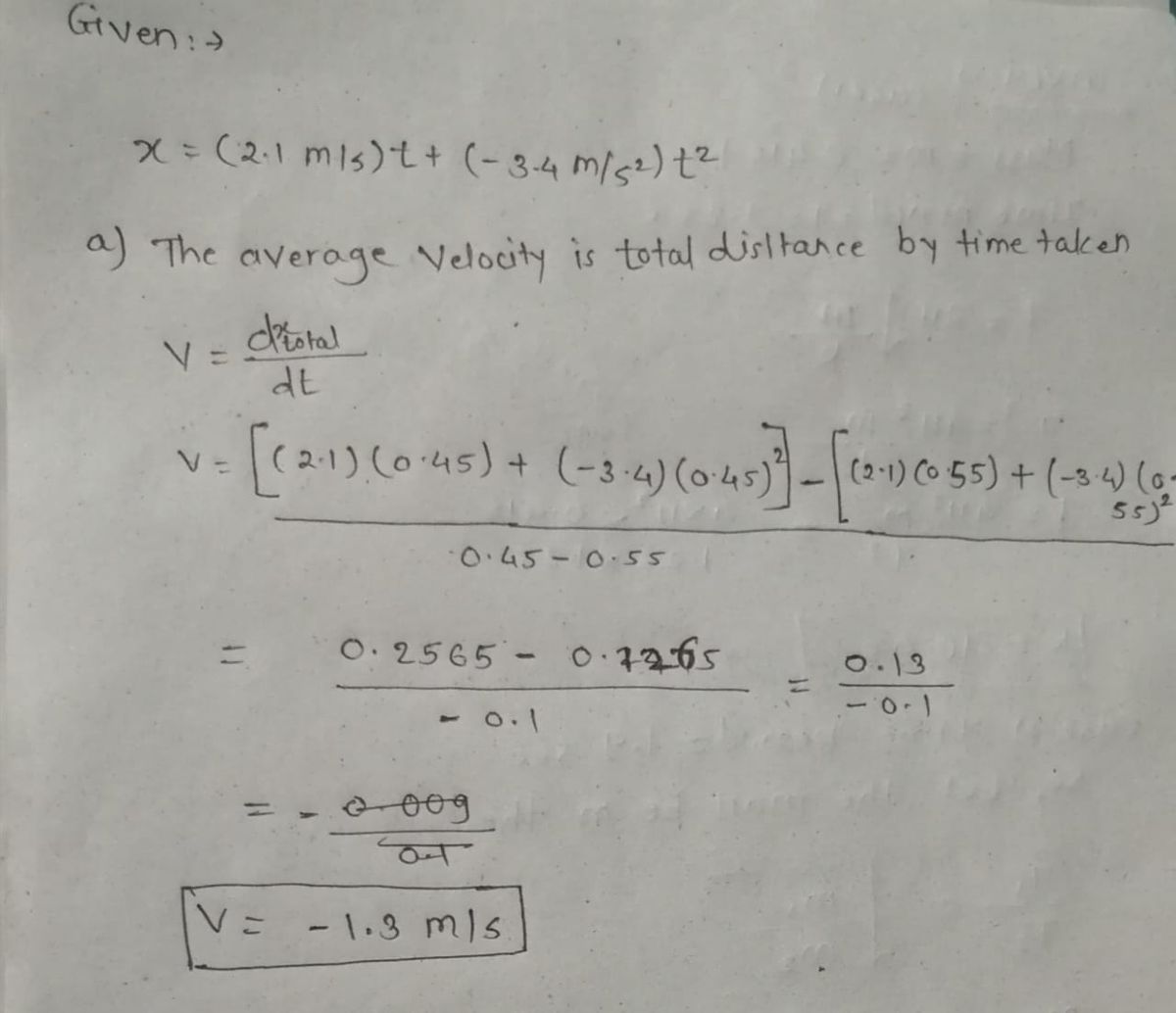A particle moves in one dimension, and its position as a function of time is given by x = (2.1 m/s)t + (−3.4 m/s2)t2. (a) What is the particle's average velocity from t = 0.45 s to t = 0.55 s? (Indicate the direction with the sign of your answer.) m/s (b) What is the particle's average velocity from t = 0.49 s to t = 0.51 s? (Indicate the direction with the sign of your answer.) m/s
Displacement, Velocity and Acceleration
In classical mechanics, kinematics deals with the motion of a particle. It deals only with the position, velocity, acceleration, and displacement of a particle. It has no concern about the source of motion.
Linear Displacement
The term "displacement" refers to when something shifts away from its original "location," and "linear" refers to a straight line. As a result, “Linear Displacement” can be described as the movement of an object in a straight line along a single axis, for example, from side to side or up and down. Non-contact sensors such as LVDTs and other linear location sensors can calculate linear displacement. Non-contact sensors such as LVDTs and other linear location sensors can calculate linear displacement. Linear displacement is usually measured in millimeters or inches and may be positive or negative.
A particle moves in one dimension, and its position as a function of time is given by
m/s
(b) What is the particle's average velocity from t = 0.49 s to t = 0.51 s? (Indicate the direction with the sign of your answer.)
m/s


Trending now
This is a popular solution!
Step by step
Solved in 2 steps with 2 images


